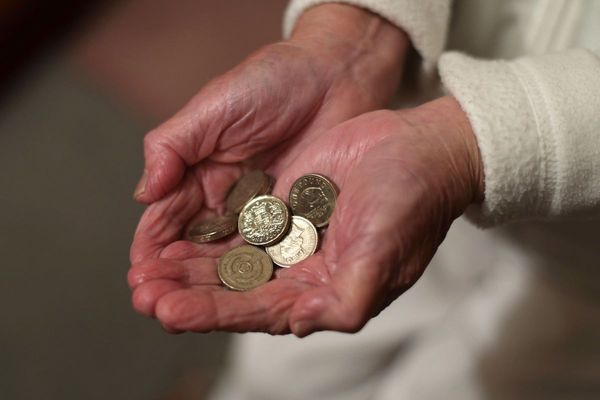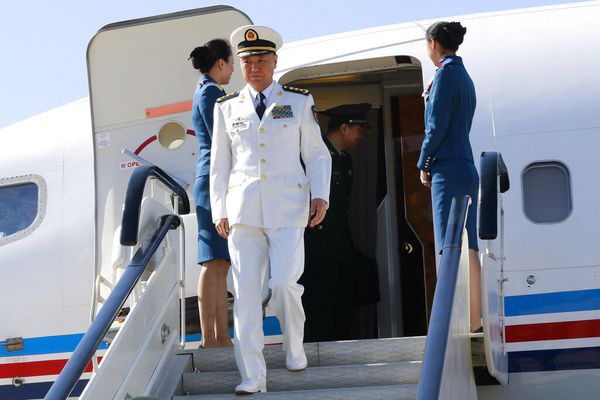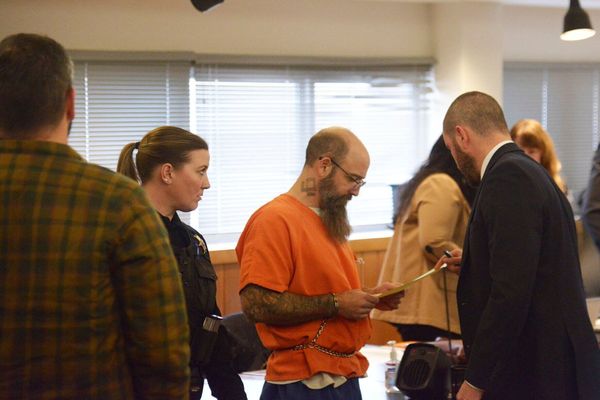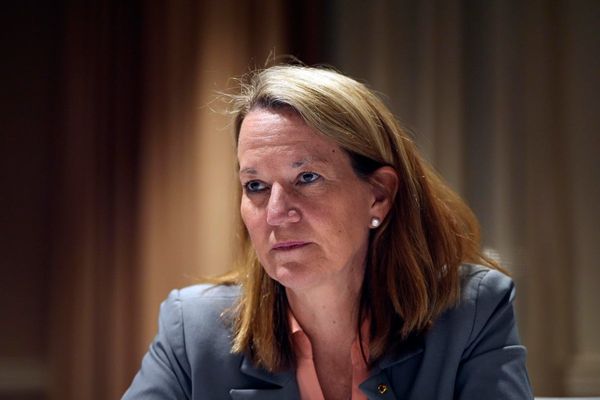
About six years ago, Aboriginal health worker and former army reservist Daniel Dawson began searching for more detail about his Indigenous heritage. Like so many Indigenous people seeking answers about their ancestry, he began with his nan, Marion. Then in her late 70s, she suggested he speak to his cousin, Grant Higgins, who was more familiar with the family’s ancestry. That fortuitous conversation led to an extraordinary awakening for Dawson.
He was descended, Higgins told him, from Frank Leighton Sinclair, a Yuin man who was one of the two equal-first Aboriginal servicemen to fight for the British empire. Sinclair, who at 28 served with the 1st NSW Mounted Rifles, sailed for the Boer war from Wooloomooloo on the Southern Cross on 17 January 1900. And this meant Dawson was of Yuin and Dharawal heritage, not Wurundjeri, as he’d always thought.
Higgins knew a historian, former Victorian secondary history teacher Peter Bakker, who had an interest in Indigenous diggers, especially those who’d fought in the Boer war. Higgins put Dawson and Bakker in touch.
Bakker had already uncovered what was believed to be the earliest known letter written home by an Indigenous Australian serviceman, Jack Alick Bond, like Sinclair a Yuin man. By coincidence Bond sailed for South Africa with the 1st Australian Horse from Woolloomooloo on the same day as Sinclair – though on another ship, the Surrey.
More recently Bakker discovered four letters that Sinclair wrote home to family from the Boer war that predated Bond’s letter by a few months. These are now the earliest known letters from an Aboriginal soldier fighting for country and empire on record.
***
Sinclair’s letters offer some disturbing insights into the fighting and living conditions faced by the Australian-raised troops in the conflict between Britain and the two independent Boer states (Transvaal and Orange Free State) between 1899 and 1902. They also show that he was cognisant of the appalling treatment of the Boer civilians and the mass fatalities among enemy troops.
In a letter home to a brother, later published in the Kiama Independent and Shoalhaven Advertiser on 26 April 1900, from the Modder River, Sinclair wrote that he was “right in the middle of the fight, but so far have not fired a shot”, and that he’d gained nearly a stone on the ship journey but expected to swiftly lose it because troops were “limited to six biscuits and half a pound of tinned meat per day”.

“It is painful to see the people – mostly natives – starving and half naked … We have 5oo Boer prisoners in charge, so we have to keep our eyes open as there is likely to be an attack at any hour to rescue them. Anyway, we are ready for the attack. There are about 40,000 troops here and it is terrible to see the train loads of wounded soldiers passing day and night for Cape Town. We left two of our men at De Aar, suffering from fever, and one has since died … When I first came up here I was sick for a few days, the bad water being the cause, there being hundreds of dead Boers in the river … Skeletons may be seen all about only half buried …”
Sinclair and the 10 other known Indigenous Australian servicemen were deployed to South Africa at a time of continuing widespread colonial and postcolonial violent dispossession – including massacres – across Australia.
Australia lost about 600 men during the three-year Boer war. Tens of thousands of Boers including many women and children, as well as black South Africans, died in British concentration camps during the war.
In another letter home, also published in the same paper on 1 May 1900, Sinclair wrote: “We are getting a fearfully rough time of it. You could hardly believe that men could be so badly treated. We are only allowed half rations – that is three biscuits a day; and today we got one biscuit and a pint of flour between two men. Up to this date we have been in three engagements. There were 300 British and 700 Boers killed in the last engagement … Several horses were shot in the engagement and we lost about half the others through heavy marching.”
Sinclair wrote of his “several narrow escapes, my horse being killed the first day I was out. I had three horses in the first week. The last one I had got knocked up [shot] and I was lost, being missing for two days, though I turned up safe”.
He conveyed how “two men accidentally shot themselves, and one has since died. It is a terrible sight to see men and horses lying dead all around”.
But he wrote: “It is something grand to see our men stand under heavy fire. It is a curious sensation, but a glorious sight to see bullets and shells lodging all around us. It makes a man very determined to fight when he sees men and horses cut to pieces all around him … It rained something terrible last night, and we have no tents – nothing but the clothes we stand up in. We had to walk about all night to keep ourselves alive – in fact, it is wonderful it does not kill the half of us. This Free State country is a fine place.”

During his first deployment Sinclair was elevated to the military rank of shoeing smith. According to Bakker, this rendered him the first known Aboriginal soldier to receive military promotion. After returning to newly federated Australia, Sinclair enlisted a second time, joining the Fifth Australian Commonwealth Horse, arriving back in South Africa just after the Boer war ended in May 1902.
Thanks to Bakker’s extensive research, Dawson was informed that Shoeing Smith Sinclair was part of a family history of extraordinary military service. Six of Sinclair’s brothers volunteered for the first world war (five saw active duty), alongside five of his nephews. Yet more of his family served in the second world war (22) and, like Dawson, since. This century-old connection, he says, is extraordinary. “It has helped me better understand my own service.”
***
Bakker initially felt compelled to research Australia’s earliest Indigenous servicemen after seeing a photograph of Reginald Rawlings, a decorated Aboriginal soldier from Framlingham mission, in the foyer of Warrnambool RSL in southern Victoria.
“As a secondary history teacher I made a few inquiries and discovered that a large number of Aboriginals from the region had served in WWI but at the same time I found that there was no formal public recognition of their service. I began to feel ashamed and angry at the injustice of such a dismal mention of Aboriginal contributions to Australian society post-European settlement within our school history curriculums and that this was no better demonstrated [than] by the fact that I had not come across any references to the service and sacrifices of Aboriginal communities during Australia’s wars.”
This led to Bakker’s interest and research into Indigenous participation in the first world war and the second world war … and then the Boer war.
It has been well-established that the treatment of many returning Indigenous servicemen after the first and second world wars was appalling. Indigenous veterans were sometimes rejected by RSLs post-deployment, prevented from returning to missions and reserves, and denied soldier settlements that were often carved up out of traditional lands and granted to white veterans. Some had children taken by state governments while they were deployed.

Bakker says his research indicates that Aboriginal Boer war veterans tended to be more fortunate than their counterparts who served in later engagements. He says this is possibly because after federation (and the introduction of the 1901 White Australia policy) there were harsher controls by state “Aboriginal Protection Boards”, enforcement of racial class definitions, the closing of missions and reserves – and the formal prevention of Indigenous men from joining Australia’s military forces (according to the 1903 Australian Defence Act it was “neither necessary nor desirable” for Indigenous men to enlist).
In contrast, the story of the returning Boer war veterans, says Bakker, is a good news story. “They were able to live independent of – not on – the missions and reserves. They received a warm public reception together with their white mates upon their return from overseas. They travelled freely and obtained good jobs, acquired personal property, married, had families and lived in residences superior to what they had previously experienced.”
Daniel Dawson has considered what some might regard as an anomaly of Indigenous men serving in the forces of an empire that was simultaneously oppressing and violently dispossessing their people.
“I believe that Frank and all of my Sinclair family were ready to take a risk of dying on the battlefield for a monarch they knew little about, but it was terrible that in these same monarchs’ names our own people were suffering and even being killed on our home front. So, it made more sense to these men to seek the opportunities in joining the army to obtain an income, food, and clothing and travel … especially when European colonial society was imposing even greater limits on Aboriginal rights and freedoms.
“I strongly believe that back in the day while seeing so much discrimination, segregation and genocide around the Nowra to Moruya and Kangaroo Valley region, that a lot of our family would have seen the strong benefit of going to war for the benefit of being treated equally.”







